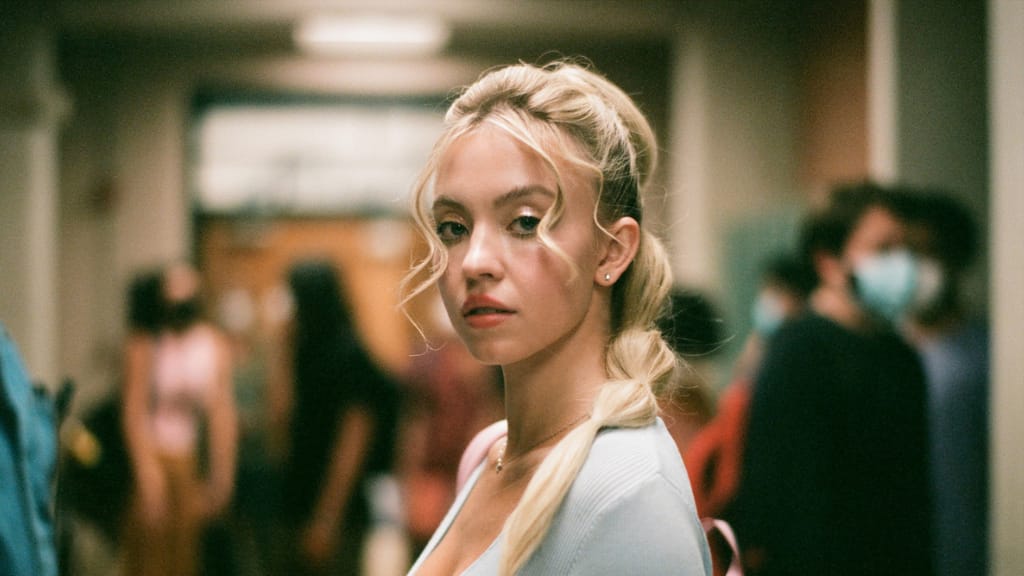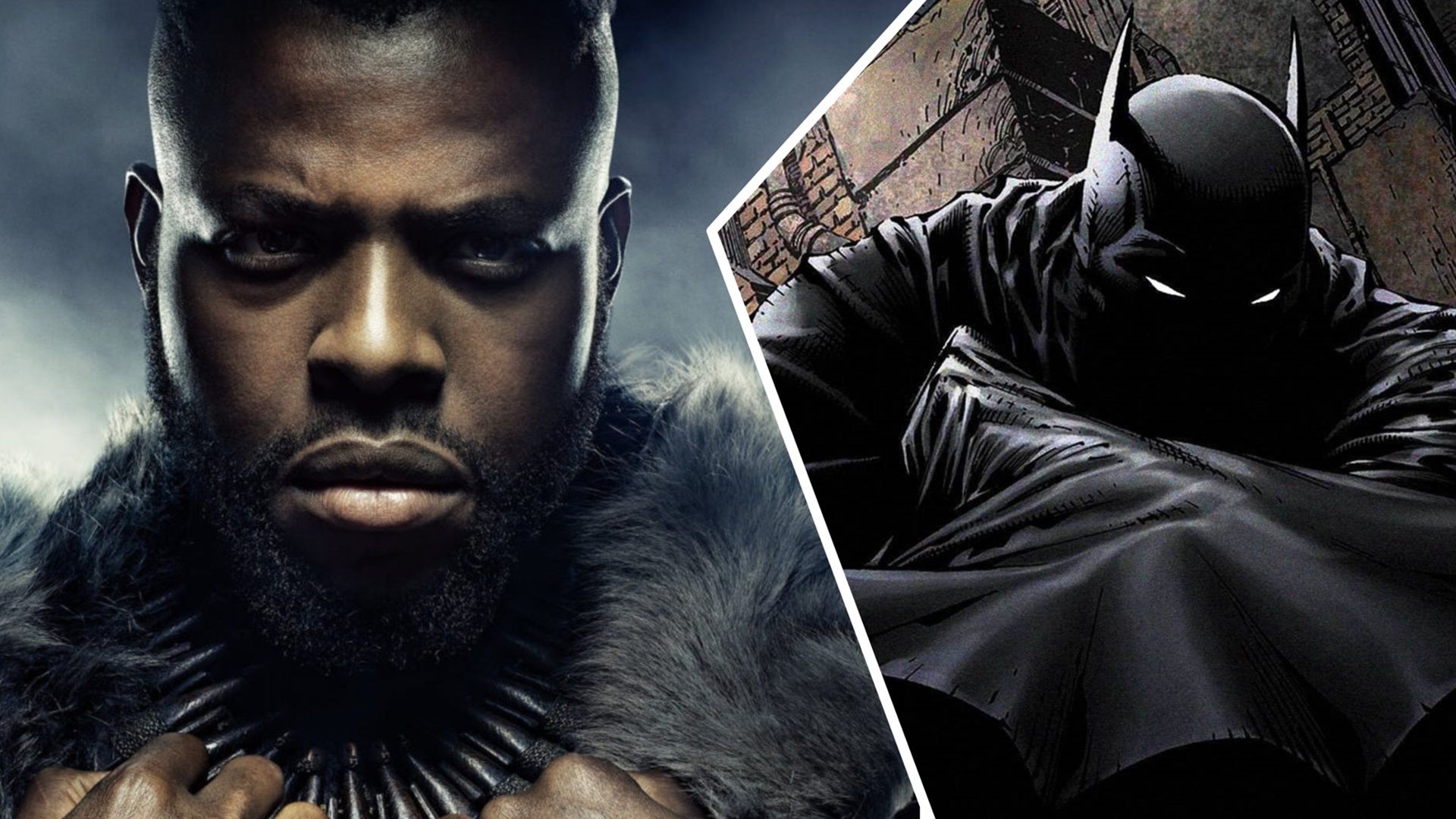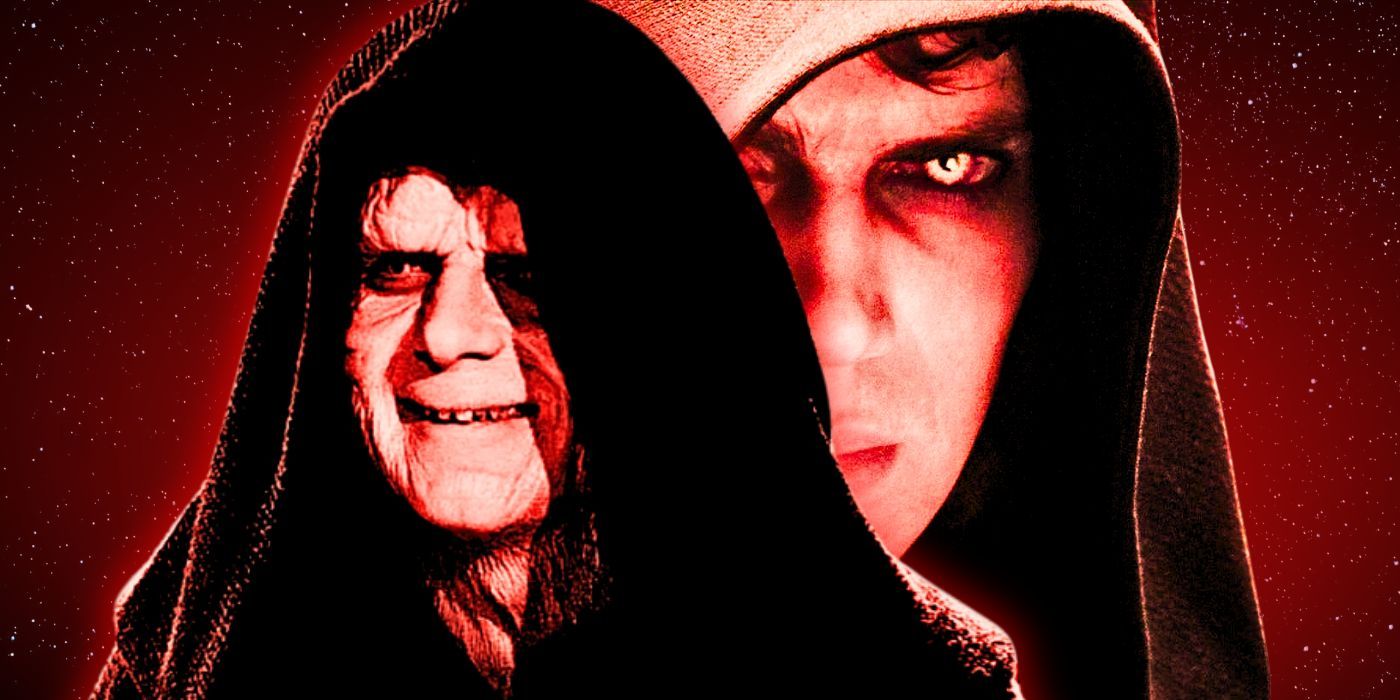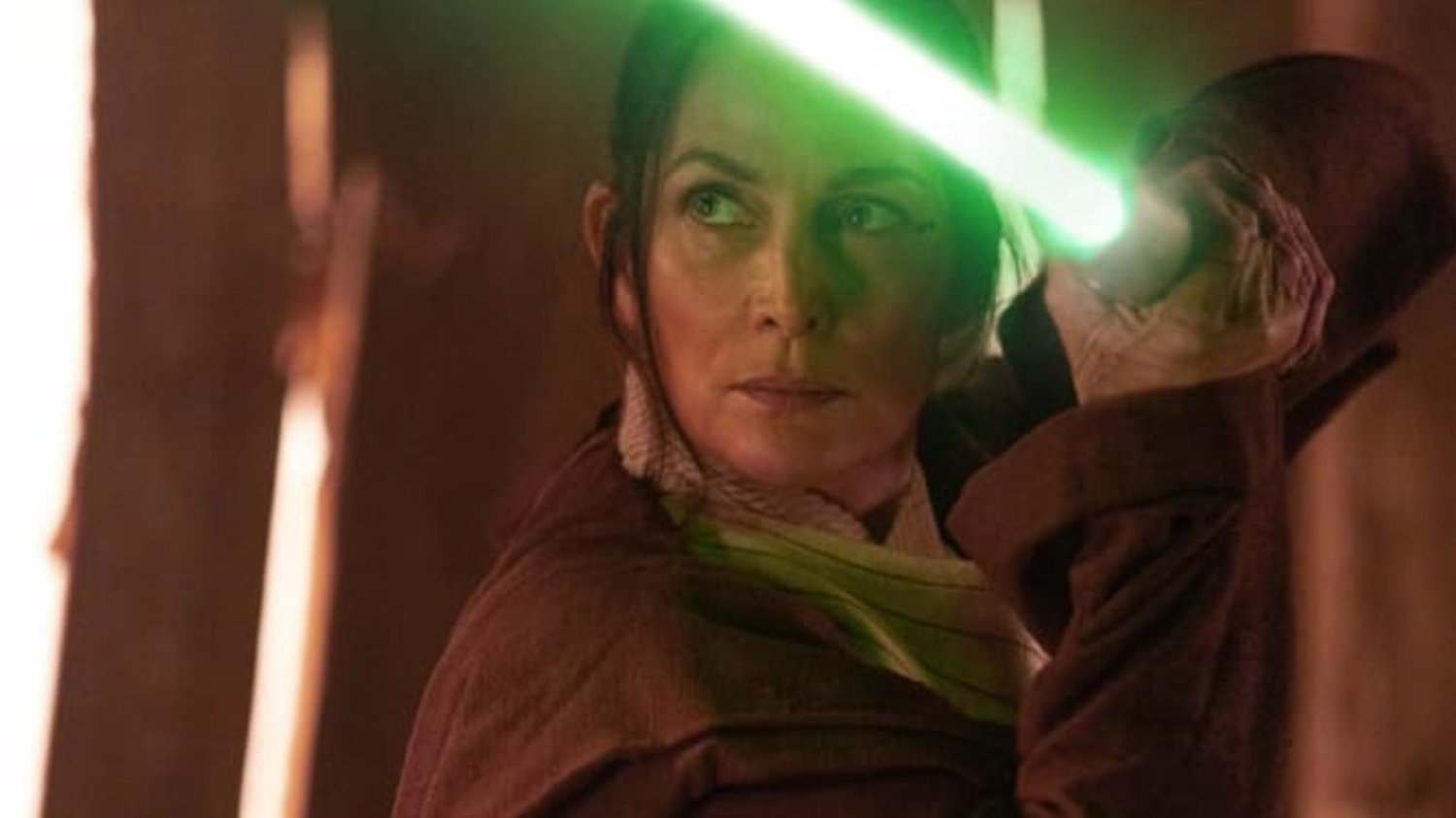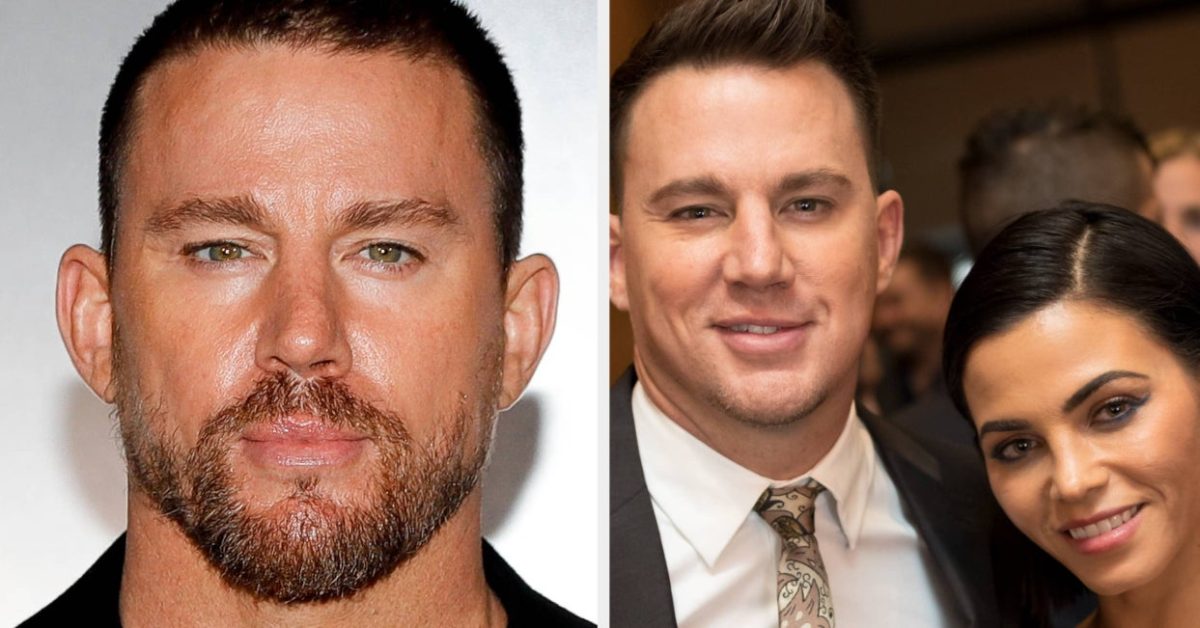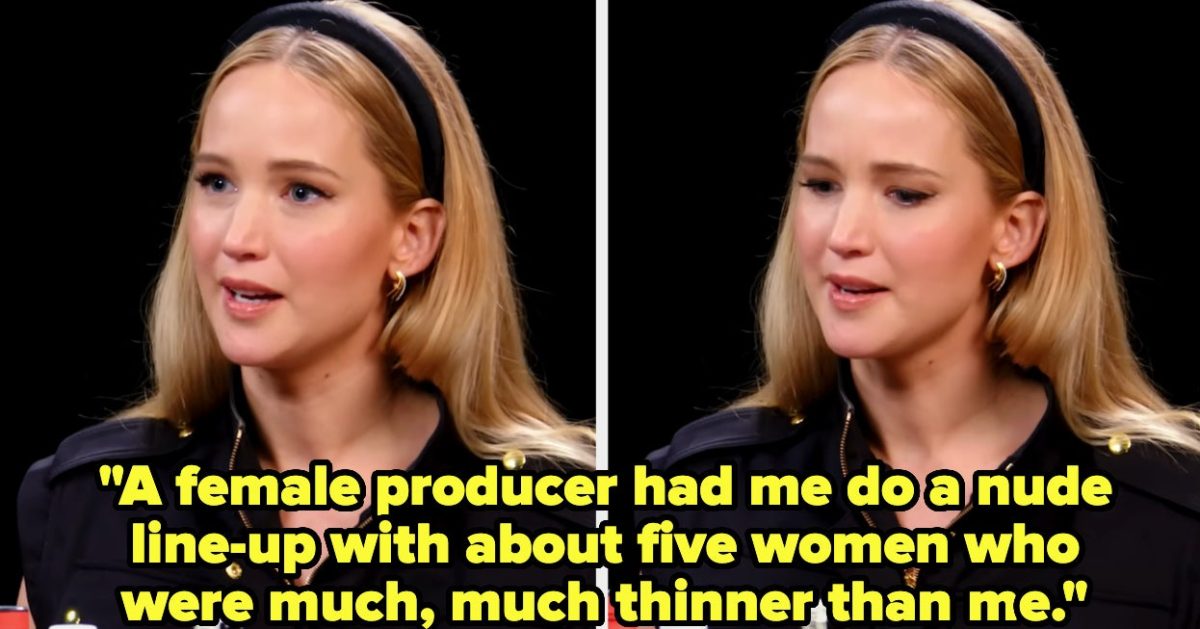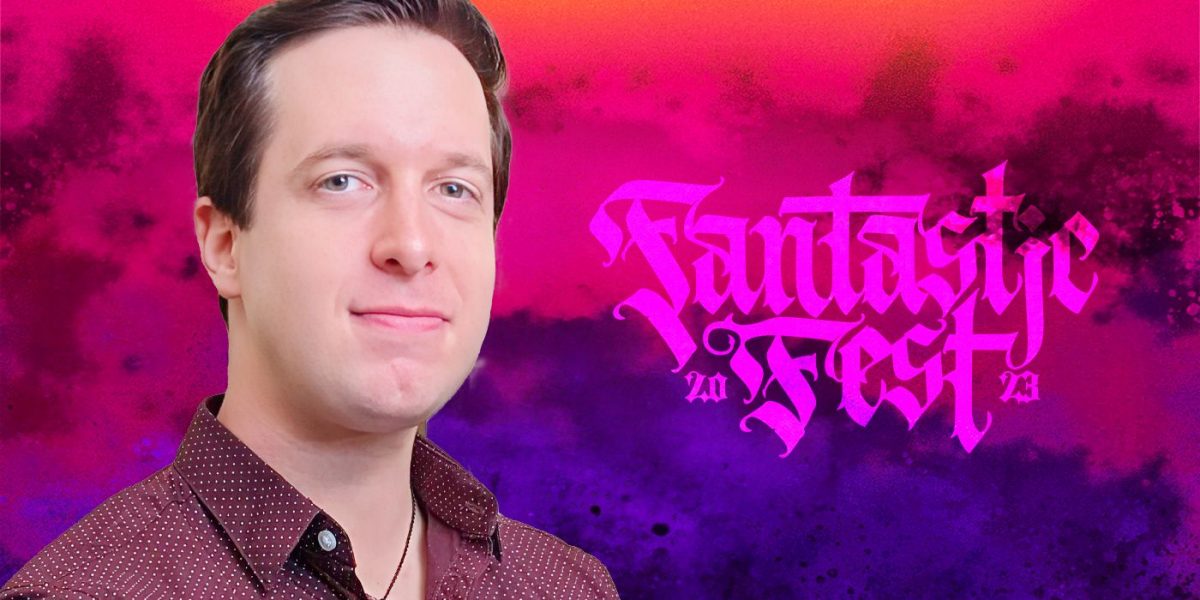
Meet ‘The Creator’ Cinematographer Oren Soffer, Hollywood’s DP on the Rise
Oct 1, 2023
The Big Picture
Oren Soffer is one of the most exciting cinematographers on the rise in Hollywood. He’s the protégé of Academy Award winner Greig Fraser who recommended him to Gareth Edwards for The Creator. While at Fantastic Fest 2023, Soffer revisited his journey in the film industry thus far and detailed the unique production process they used on The Creator, a process that could change big-budget filmmaking for the better.
Looking for a filmmaker on the rise you absolutely need to keep an eye on? Look no further than The Creator cinematographer Oren Soffer.
I first caught Soffer’s work in the 2022 Toronto International Film Festival selection Fixation. His work is on point in that film from start to finish, but there’s one particular shot during the tail end of the movie that sent me on my way eager to learn everything I could about this emerging voice in the industry. That led me to discover that Soffer was the protégé of one of my favorite working cinematographers, Academy Award winner Greig Fraser. Soon after that I learned about how Fraser planned to shoot Gareth Edwards’ new film, but had to back out due to his commitment to Dune: Part Two. Fraser then recommended a replacement to Edwards, a new artist busy amassing an impressive body of work, but one with no studio-level experience — Soffer.
Soffer winds up exceeding all expectations with his work in The Creator. Not only is the finished film packed to the brim with stunning visuals, but Soffer also contributed to developing a production process that could change big-budget filmmaking for the better going forward.
One of my most anticipated interviews of Fantastic Fest 2023 was my chat with Soffer, a conversation that fortunately was permitted to run well over the time limit so that we had the opportunity to cover Soffer’s journey in the industry the far and also dig into the unique way he photographed The Creator.
You can hear about it all straight from Soffer himself in the video interview at the top of this article, or you can read our full 40-minute conversation in transcript form below.
Image via 20th Century Studios
PERRI NEMIROFF: We obviously have to talk about The Creator, but I do want our audience to get to know you a little better first. I love asking this to start digging into the beginning of one’s journey; what was the movie you saw, the personal experience you had, the person you met, you name it, that first inspired you to say, “I need to get into the film industry?”
OREN SOFFER: Well, the story starts from before I have fully formed memories, but I have a core memory of Yoda wiggling around in the hut in Empire Strikes Back, wiggling his little puppet butt and that image is seared in my brain. I think I must have seen it when I was two or three at daycare. Somebody put on Empire Strikes Back or it was on TV, like on TBS or something, and I just soaked it in and then immediately became obsessed with Star Wars and sought out the original films. My uncle had a laser disc player. I watched them on laser disc. The special editions came out in ‘97 and that was a seminal moment. So yeah, big Star Wars kid. Big dinosaur kid. Jurassic Park was huge.
The right answer!
SOFFER: Jurassic Park was huge. Massively important movie. When the special editions came out, the VHS box set, which I still have caked in dust somewhere.
So do I!
SOFFER: And I can’t watch it [laughs], but it came with a CD-ROM that was an interactive behind-the-scenes of the making of Star Wars. And it has all the footage we’ve seen subsequently. There’s Empire of Dreams, I think it’s called, the documentary that was on the DVD later. So it’s all using the same materials and it’s all the initial Industrial Light & Magic stuff, the shots of the green screens, the ships, the models. That was switch number one, and then switch number two that kind of closed the circuit was Lord of the Rings special editions, the appendices on the special edition box sets. I inhaled those. And this was now middle school, high school, so I was a little older and a little bit more like, “Oh, I don’t just love movies. I actually want to make them. I see the process of making them. That looks cool. I want to be a part of that.”
And yeah, I was always into visual art. I was painting and drawing as a kid, and I picked up photography and my friends and I would make silly movies on camcorders in middle school. So, it all ended up funneling into cinematography and filmmaking.
So many follow-up questions! What were those “silly movies” about? Do you find yourself still drawn to those kinds of stories now as a professional cinematographer?
SOFFER: Somewhat, yes. One of them was about a briefcase heist and it was like a crazy, wacky visual comedy. We did all these gags. We made a stuffed person out of just clothes and stuffing and cotton, and one of the gags was that, as the characters are sort of escaping from one another, one of them accidentally falls off of a 20th story balcony. So we filmed the first part of it with our actor just sort of pretending to go over and then we cut to a shot from the street and we dropped the dummy from the balcony, 20 stories down onto the ground. I still have a copy of that film somewhere scanned in low resolution.
That should be a DVD bonus feature on The Creator and it should be like, “Look at where I started and look at where I am now.”
SOFFER: It would be one of the saddest versions of that example. [Laughs]
I think I was kind of always drawn to genre-y stuff – heists, robberies, and Westerns. We did a fantasy film in high school that was this guy steals the scythe from Death. It sounds insane when I describe it because it was, and it was a high school movie so it was very low quality. But yeah, those were the early explorations for sure and I think there’s a direct line from there to now.
Image via 20th Century Studios
So you decide you want to be a professional cinematographer. When you made that decision, what did you think was step one to making that dream a reality and now having done it, would you give that first step as a recommendation to somebody else who wants to follow in your footsteps?
SOFFER: Great question. I think first step for me was just starting to educate myself. I lived in Israel at the time so I was about as far from this as one could be, certainly as far from Hollywood and Los Angeles and the American film industry, but kind of always dreaming about it. I grew up in the States as a kid, so I always had one foot in both cultures. Obviously English is my first language. I’m not in here with an Israeli accent or anything. So I think that helped me keep my mind a little bit on, “I’ll go back to America and work in movies one day.”
So while over there, we had a filmmaking class in high school, which was very special, and very lucky.
I wish.
SOFFER: I know. Very, very fortunate. I mean, it was scrappy. This was 2003, we were shooting on literally VHS, like a VHS camera with the full-size tape on which some of these movies that I just described were filmed. One thing I always remember from that – and eventually we moved to miniDV – I was like, “Why doesn’t this look like movies? Why doesn’t this look like shallow depth of field, cinema lenses?” I didn’t know anything about sensor chip size, sensor size, digital cameras versus 35mm film. I didn’t know any of that, so I had to learn. There were a few very seminal books that I think every aspiring cinematographer eventually stumbles upon. There’s The Five C’s of Cinematography and Blain Brown’s book that’s just called Cinematography, and a few others. So that was the beginning. And watching DVD extras. A lot of great stuff in the DVD extras. And this is all pre-YouTube, so none of the resources that are available now were available. I think it’s a lot easier to self-educate now, but at the time, you had to look.
And then the second step was going to film school. So I went to NYU
Good choice.
SOFFER: It was great. Would I recommend it? It’s an open question because it was great for me. It was very important because I was moving from a different country halfway across the world. I didn’t know anybody in America. I had to start from scratch, and I thought that that would be the best way to do it, and it was because you meet so many people. All my good friends are from NYU and all my closest buddies and people that I work with. So it was really important, but also very expensive and I don’t necessarily think it’s like a need.
I always talk about that with film school. One of the questions that I have a habit of asking to further emphasize that it could be the right path for some but not for others is, what is something you learned in that program that you still find yourself using all the time today, but then also, can you name something that all the schooling in the world never would have prepared you for when you hit your first professional set?
SOFFER: That’s definitely the case at NYU. We had one professor especially, I’ll shout out Gordon Arkenberg. He taught a class called The Science of Cinematography that just blew our minds. It was all about physics and optics and lensing and light spectra. Just mind-blowing stuff that I think is actually very important for cinematography. That’s the perfect example of something you learn in a classroom setting that if I was just sitting in front of a physics book by myself, I would close it. I’m like, “I do not need to know any of this stuff,” but you kind of do. That class was very seminal, and his influence, I think, is felt. Every cinematographer who has gone to NYU knows Gordon, took his class, and talks about that class.
I think also film history. I encounter a lot of younger DPs who don’t watch movies or don’t watch a ton of movies, and I’m always like, “How do you talk to directors?” Because directors speak movie. Directors all watch a ton of movies and they know all the references, and they reference specific movies and shots and film language, and if you don’t speak that language, I’m like, “I don’t know how you work with a director.” Especially in narrative. Maybe it’s different in commercials and music videos, which I do as well. So just studying film history is huge. People can do it on their own. You have Criterion Channel, you’ve got websites, you’ve got blogs. There’s so many things. Just go down the Sight and Sound list and start from number one and go down to 100. But I get it, it’s hard sometimes to find the time and also to have the analytical mind to understand film language and analyze it and study it. So that was really great.
But the one thing you don’t get in school is just on-set experience, and so that was really the thing that you don’t learn, especially on professional sets. We would shoot a lot of student films, but there’s only so much you learn on a student film. You learn how to make a student film very well on student film sets, but it doesn’t always translate to professional shoots. I was very lucky, I met Reed Morano sophomore year.
Image via Hulu
She’s so good! Were you in the program together at the same time?
SOFFER: She’s 12 or more years older than me, so she did the program earlier in the 2000s, but she’s an alumnus so she came back to speak. And this was before famous Reed Morano. This was like indie Sundance Reed Morano.
I’m picturing the shot of hers of Olivia Wilde in Meadowland walking through Times Square. Ever since I saw that shot, I’m like, “You are a name that I will always look out for.”
SOFFER: My favorite shot of Reed is when she shot Little Birds. She was seven months pregnant and handhold operating a 35mm camera, and she’s got her eye in the eyepiece and her hand’s resting on her belly. You see that and you’re like, “You are just one of the most badass people I’ve ever met.” So anyway, she came to speak at NYU and I was very fortunate. It was me and one other kid. We knew who she was because we were well studied in cinema and then we went and talked to her after the class and she said, “Hey, I’m shooting this movie, Kill Your Darlings. Do you want to come help out on set?” So I did three movies with her as a camera PA, like an intern, and that was my first professional set exposure. And now, one can argue, NYU is the reason that connection happened, which it was.
That’s the thing. It’s the community and connecting the dots.
SOFFER: It was, it was. But, subsequently, I’m skipping ahead a little bit, but I met Greig Fraser, and that all happened outside of that framework.
One of the best in the business. I’ve been obsessed with his work for a long time now.
SOFFER: Me too, as you can probably imagine. He’s been a huge influence, and I’ve stolen a lot from Greig over the years.
How did you meet him?
SOFFER: We met at the AFC Awards completely randomly. Well, actually, before that we were DMing on Instagram.
Did you DM him?
SOFFER: Definitely.
I thought maybe he saw a short you made and felt inspired to reach out.
SOFFER: He might’ve. You know what? I don’t exactly remember. Maybe I should tell myself that that’s what happened. [Laughs]
I am curious, when you want to reach out to someone you admire like that, how do you even begin that conversation, or build the courage to send the message to begin with?
SOFFER: I think that’s the Israeli in me. There’s a little bit of chutzpah, for sure, that’s like, “I don’t know? What’s the problem? I’m just gonna reach out.” I’m not even overthinking it. I’m just like, “Why wouldn’t I?” This is what this platform is so great for. Instagram’s here, we have access to all these people, use it! And I encourage people to reach out to me all the time. I’ll tell people, “DM me any questions you have. Email, whatever you have,” and people do. And I’m always more than happy to answer and give back in that way.
It’s the best thing in the world.
SOFFER: Yeah, because I just got really lucky with my mentorships and I’m like, “I gotta give it back. I gotta pay it forward.”
I was just talking to Sung Kang who just directed his first feature and he was busy singing Robert Rodriguez and Walter Hill’s praises because they’re so open with all of their knowledge. They’re sitting there eager to share it just because by sharing it, we make films better in the future.
SOFFER: 100%. Another great book that I read in high school, by the way, Rebel Without a Crew, Robert Rodriguez. He’s written a few books about indie filmmaking. So yeah, I just soaked all those up. Easy Riders, Raging Bulls, that’s another good book.
What I would do to see his space right here in Austin!
SOFFER: Can we go? Can he make us some pizza?
DM him. Maybe he’ll say yes!
SOFFER: Not a bad idea. I’ll do it!
Image via Disney
So we brought up Greig. Can you give us a specific example of a technique that Greig taught you that we can see influencing your own work, whether it’s on The Creator or anything you’ve made thus far?
SOFFER: I think it’s more a philosophy. Greig, I think, has always talked about, and I’ve always responded to his use of single-source lighting. There’s some quote from an old interview of his that just was lodged in my brain for years, which was, “When I walk into a space, a location, the first question that I ask of myself is, ‘Can I shoot this scene without any lights? Is this giving me enough as it is to just set up the camera and start shooting?’ And if the answer is yes, then I’m gonna do it that way.” There’s no need to add and gild the lily or put sprinkles on top of ice cream, as he also puts it. It’s too sweet when you’re adding things [when] it’s already good. And then if you do need to add a light, then you start to ask yourself, “Can I do this with one light?” And then you just slowly build it out from there. But it’s always starting from this single-source lighting, available lighting, natural light, and embracing that, and that’s something that’s always been very omnipresent in his work and something that I’ve always responded to.
Somewhere along this journey, I also picked up still photography. I’ve taken a lot of stills, a lot of street photography over many, many years, like during travels and all that. I don’t do studio photography, like lighting or anything like that. It’s purely just travel, street photography, from-the-hip, natural light. So I think that also has ingrained itself in me, for sure.
This is definitely gonna come up when we start to talk about how you guys shot The Creator.
SOFFER: It all connects!
I love reading about how light the crew and the gear were, and how you were able to move and be more fluid with everything because of it.
Before I get there though, Greig was meant to shoot The Creator. Dune 2 came up and he had to step out, and he recommended you for the job. When you found out and were offered this position, was it like, “Yeah, no-brainer. I’m ready to make this leap to a major studio film,” or were there any nerves or apprehension, or maybe burning questions you wanted Greig to answer to make sure you felt comfortable?
SOFFER: [Laughs] Many thoughts were going through my head. The first one was, “Yeah, absolutely.” And it’s actually kind of funny, Greig, at first, when he pitched it to me, was like, “I don’t know if this is going to interest you …” He’s like, “This is a very weird pitch. The way we’re setting this up is very unorthodox, and I’m gonna explain it all.” Because he had been sort of developing this methodology with Gareth [Edwards] over a couple of years and planning about how to shoot the film. And then in the back of my mind, I’m like, “I don’t even know why you would start with that. Of course I’m gonna say yes to whatever you’re about to say to me.” [Laughs] It’s very considerate. I appreciate that he’s the kind of person that thinks about that stuff, but I was like, “Of course it’s a no-brainer.” I did have many questions, most of which didn’t have answers yet, which then became part of the like, I just have to let go of the anxieties and the unknowns of this and just jump in.
Image via Disney
Can you give us an example of a question you had that didn’t have an answer then, but you discovered the answer to along the way?
SOFFER: It wasn’t clear when he pitched the project to me – and this was before official pre-production started – the specific logistics of who’s gonna do the costuming, who’s gonna – basically, every aspect of this film is unorthodox. One unorthodox aspect was the costuming, which a lot of people haven’t talked about yet, but someone should reach out to Jeremy Hanna, the costume designer. He worked at Wētā Workshop and has since left to work on other projects, but he’s down in New Zealand. Also a young guy. I met him at the special screening the other week. Amazing, lovely guy. Never stepped foot on set, but he designed all the costumes with Gareth. Wētā Workshop fabricated them and then shipped them to Thailand. So when I came on board the project, those were already well into production, and I saw all the images, all the concept art, the designs of the costumes, the look of them and the physical props, the photos they took. So I was like, “Oh, wow. This looks incredible!” And talk about another connection to Lord of the Rings, the special features, the minute you find out, “Oh, Wētā Workshop made the props and costumes for this?” That’s just as crazy as Industrial Light & Magic doing the visual effects, and somehow I’m involved in this!” It’s nuts.
But anyway, we had the costumes and then I was like, “Okay, who’s putting them on the actors? The costume designer’s in New Zealand. What is the actual logistical process here of how this is gonna go?” Especially because how it was described to me was like, “You’re gonna be driving around Thailand in a van and hopping out on the side of the road and shooting a scene in a village, and then hopping back in the van and going to the next place,” which is sort of accurate to how it ended up being, but it was just a bit of a bigger footprint. There were like 100 vans. It wasn’t just one van. There was a lot. There was actually a big production footprint that supported the film, but I certainly didn’t, and I don’t think even Greig knew what that would look like before we actually started pre-production, the hard prep in Thailand. But by the time we got there, it became very apparent how everything was gonna work, and so all that anxiety and all that questioning went away.
I think part of that was coming from indie films, you feel like you always have to ask those questions. Like, “Okay, but how are we gonna accomplish this? How are we gonna accomplish that?” But the biggest thing I learned right away was you’re in a different league now, people have got this, people have thought about this stuff, and you don’t have to worry about it. You don’t have to worry about that stuff, the scheduling. I could just focus on what I need to do, and that was like a breath of fresh air.
You are in a different league with this film, but one of the most refreshing things about this production is that it’s a big-budget studio film, but one that doesn’t overspend unnecessarily. Can you name something about the way you shot this movie that more big-budget films should consider using because it is more cost-effective but it still produces a killer image?
SOFFER: Totally. First off, obviously visually, in terms of lighting, camera work, lensing, we made a ton of decisions that were all initially, first and foremost, designed to create an immersive and believable and tactile experience for the audience, but also embracing prosumer equipment and also things that allowed us to have that smaller footprint and create that look. Now, am I gonna sit here and say, “Well, every shoot should just use prosumer equipment?” Not necessarily, but I think it’s more the ethos and the thought of starting from minimalism. And it goes back to that Greig quote. It’s like, “Can I do this with nothing or with just what I have?”
There’s a lot of just-in-case thinking on big-budget filmmaking where you’re like, “Well, let’s just have all this stuff and all this crew and all this equipment just in case.” But for us, it was really more about paring it down and saying, “No, no, no. We’re gonna narrow this down to just what we need in order to accomplish this look.” And it meant we shot on one lens, we shot on one focal length, we didn’t carry a whole lens set. We shot on the small camera bodies, not a big footprint. We expanded the scope of the production when we needed to. Like we had some night scenes and those do require more lighting, and there are some sequences where we used a bigger crane, but we day-played that stuff, so we wouldn’t actually just carry it all around with us. It just required more planning.
I think the biggest thing though was just the innovative visual effects approach. The reverse engineering of it, which Gareth has talked about and explained is, I think, the key to unlocking this budget level. It’s the same thing, it requires extra planning and extra thought, and keeping your production designer into post, and just rethinking how you’re approaching design, but the end result is incredible cost savings, but also even more tactile and immersive visuals.
One example that I can give about the sort of overall approach is there’s a shot in the movie that is also in the trailers, and it’s a shot of an ambulance flipping over from the inside. It’s not a spoiler to give it away because it is in the trailer. So, usually when you read a shot like that in a script, if you’re, for example, the production designer – and not to even get into the lighting, which I’ll get into – or you’re the stunt coordinator, you read that, and you’re like, “Alright, so we’re gonna have to build a custom ambulance interior set, put it on a gimble, put it on a stage, have it be able to roll in that way and put the stunt actors in there, rig them up, da, da, da, da da,” all just to get this one little shot. And Gareth immediately just goes, “No, no, no, no, no. We’re not doing that. We have a real ambulance that we’re filming our exterior shots of the driving footage of the ambulance on and our interiors of the characters that are in it. All we need for the shot is, it’s less than a second, and we just need to give the impression of the ambulance flipping over.” So we did it in the old-school Star Trek way. Ambulance is parked outside so we don’t need to light it. It’s getting natural daylight. The camera’s looking through the back and we tented the back so that it didn’t look like there was light coming in, and then we did a 3, 2, 1 countdown and Gareth rolls the camera 90 degrees sideways and the actors throw themselves into the air and the props team are throwing some medical supplies in after them, and papers flying around and that’s the shot in the movie.
So it’s less one specific thing because that’s one of, like, dozens of examples of just embracing that mentality and just saying, “That’s all we need. What’s the quick, scrappy way to do this?” And I think that that just blew my mind, and way more big productions could and should embrace that kind of thinking and that kind of filmmaking. It’s like very pure filmmaking.
Never in a million years would I have guessed you completed that shot that way.
SOFFER: Oh, yeah. There’s other stuff people haven’t tapped into and we haven’t talked about yet. We used a lot of projectors for stuff, just from Amazon, like cheap projectors that just plugged into a laptop for some driving shots and for some of the stuff on Nomad. There’s really low-fi, scrappy solutions to things that would normally take a lot of resources. And I think that’s what makes the difference is that approach. I love that stuff. That goes back to the movies I was making in high school.
Image via 20th Century Studios
I’m glad we started where we did with this conversation because it does feel like you held tight to what inspired you from the very, very beginning, and now we can see it reflected in your work. And also that same enthusiasm for similar things are still there powering everything you do.
SOFFER: Yeah, absolutely! And Gareth still has that. Gareth’s 10 or however many years older than I am, and he still has that passion. He’s still just a kid making movies with his friends, and on an $80 million movie, that makes all the difference.
I know Gareth likes to operate sometimes and clearly had a very unique way of making his films. What is something about him and the way he collaborates with his cinematographer that is specific to him?
SOFFER: Well, he operated pretty much this whole movie. So that was a big part of the initial design of how we were gonna make the film was to empower him to be spontaneous and reactive in real time to things that were happening. We’re always fishing for those moments of genuine – the things that are unplanned because those end up resulting in the most interesting scenes or moments or little details. So it was all about giving him and the actors the space to explore and discover, and that was a big part of how we wanted to shoot the film. We lit the film based around that idea. It was more about lighting a space. Greig has a great analogy where he talks about how it’s like painting a house. Most of the work goes to putting up the tape, moving the furniture, mixing your paints, and getting everything ready. Once you’ve done all that work, which we did in pre-production with a lot of planning and thought, once you actually get on set, it’s like the last 20% is just painting, and you just go for it, and you have the freedom to paint. You can start over here, you can start over here. If you’ve done the prep right, you can start painting whichever wall you want. That’s how we designed the lighting of the film as well. It was like lighting the space and lighting the environments and creating basically a little playground for Gareth and the actors to play with.
So, Gareth operated. Gareth’s a great operator. This wouldn’t have worked if he wasn’t, and this is also why this method would not necessarily work with every other director because you have to have a director who’s good at operating and has a good eye. And Gareth, he just has good taste. He has great taste. He knows where to find the good lighting. He knows that if lighting is coming from this direction, like from a window, that if you come around to the other side, you’re gonna get the nice fall off and the nice contrast. You don’t need to tell him, he knows. He instinctually finds those angles and those situations.
And he also has this very Spielberg-y way of coming up with shots. It’s very simple tricks when you actually break it down, but it’s all about interaction between foreground and background, always having foreground depth as well as background depth, layers of the shot, starting on something in the close-up and then coming off of that and revealing something else, or following a character from one shot to another shot and making those connections. He has that instinct, and that’s that film language. He’s just steeped in film language, and he just knows it instinctually. It makes for great shots, like very kinetic visual style that he just comes up with. You don’t have to force it, you don’t have to overthink it, it’s very gut reaction. And so it’s just a pleasure to work with that.
I’ve always been a big believer that any filmmaker, no matter what your role is on a film set, can benefit from having a clear understanding of what the other jobs are, and it’s always seemed like he’s the kind of person who not only has a good understanding of how to do that work, but also a good understanding of how to best support that department’s work as well.
SOFFER: He’s a very unique director. I certainly have not worked with anybody even remotely close to this, and I don’t know if I ever will, unless he calls me again for whatever his next film is after he takes a long and much-needed vacation somewhere.
I think he has earned it.
SOFFER: He has very much earned it, and I think he’s been fantasizing about it for a couple of years, but he’ll get the vacation. But yeah, he’s the kind of director who, he’ll sit in the van on the way to set designing a graphic logo that’s gonna appear in the background somewhere. He just does it himself because he’s like, “Oh, the graphics department, they already have their hands full. They’ve got all this other stuff they’re working on. Nobody’s thinking about this tiny little logo but me, so I’m just gonna do it.” And he has a background in graphic design and he has a background in visual effects and cinematography.
We saw it in his first film! He gets it. He gets it all.
SOFFER: All of it. But then he’s very collaborative. So that’s what makes it work is that he can do everyone’s job, but he doesn’t want to. I mean, he knows that he can’t physically do everybody’s job because you have to do it all at the same time. It’s not possible. And so he has such a clear vision and such a clear understanding of what everyone does, but what he does is he brings you in, and he brings you into his world and his mentality and his thought process, and lifts you up and says, “I want your artistry in this and I want you to understand what I’m going for here and pick up on what I’m putting down so that you can run with it.”
My whole goal on set was, he’s dealing with so much – he was a producer on the project, he’s operating the camera, he’s directing the actors – I was like, “I don’t want to bother him.” If I can go a whole day without talking to Gareth, except saying hi to him in the morning, that was a great day because that means that that mind meld that we worked on during prep and with Greig and everybody worked and that I understood what Gareth likes and what he wants and what he needs and that we gave him what he needed, and empowered him to create and to explore and to find the shots and moments.
Image via 20th Century Studios
Can you pinpoint a day when the mind meld needed on-the-spot adjustment? A time when whatever you were working on called for the most collaboration on the day between you and Gareth?
SOFFER: I don’t want to sit here and rack my brain thinking of a specific example because there are so many, but it was really just a constant dance between the two of us. The way we designed the lighting approach for the film was that it would be flexible enough to react to whatever Gareth was doing spontaneously with the camera. So, there were a few techniques that we employed in order to do that. One of them was just planting a few different lights around, and then I would sit at the monitor with my gaffer, Pithai [Smithsuth], a Thai-based gaffer from Bangkok who’s also a DP, excellent DP, and we would watch what Gareth is doing and then just react in real time. So if he starts to drift over to look in another direction, we have dimmers on all the lights and we could just dim down the light that now is not looking so great and is looking a little bit flat, and Gareth doesn’t even notice. He shouldn’t notice that we’re adjusting the lighting in that way.
We also had our best electric, Nancie [Kang], rocking an LED light on a boom pole. So that was the get-out-of-jail-free card that she was always on stand-by with that thing, and it was always ready, and whenever Gareth’s up in a shot and we just need a little extra boost or a little extra wrap of the light just to make it perfect, we would call her in, we’re all on wireless coms, and then she would just sneak in very quietly, Gareth would maybe feel it, and we’d put an iPhone on her arm, like with a workout armband, and she was able to see the shot in real time, what Gareth was filming, so she could find her perfect position and we would talk her into it.
It was every day was that dance. We were reacting to what Gareth was doing and Gareth’s reacting to what we’re doing and how we lit a space. So it was this mutual thing, but we wouldn’t have to over-communicate about it because it was just planned that way. We would talk about these things on the scouts, so all this was already figured out by the time we would show up. We would come back to a location after two months, having scouted it, and be like, “Oh, we know what we’re doing here. We already talked about this. We’re gonna do this, this, this, this, and this,” and it just comes together pretty quickly.
We also had Gareth mic’d up. This was the other thing I’ve never seen anyone do before, but we had Gareth on a microphone. So he was on a wireless mic that was picking up his monologue, and we all had him in our ear, the whole crew, the AD, the other department heads, everything. So whenever he needed something or would call out, or he would be able to say like, “I’m gonna drift over here and frame up this other thing,” so now we know where he’s gonna go. Or he would say, “Oh, I’m gonna start tilted up here and then we’re gonna add a ship over there and tilt down into the shot, and we’ll come off of that. We’ll add that later.” Like he’s giving himself VFX notes for later, for the monologue. And then the best thing about it is he does sound effects. So we’re set up in an action scene and then he’s like, “Pew, pew, pew,” doing all the sound effects, which is very funny and endearing but actually serves a purpose because it’s about pacing. So it’s about the timing of certain shots. He’s basically sound-designing the movie in his head while we’re shooting it.
All I want is for this to be a bonus. As you started to explain it, I heard in my head the Mic’d Up thing that they do with football players. Now I want this version with Gareth running through a particular shot.
SOFFER: We absolutely said on set that we should do an alternate sound mix that only uses Gareth’s sound effects for the DVD or the Blu-ray, and I really hope they follow through.
I would watch this in a heartbeat!
SOFFER: [Laughs] Very entertaining.
Image via Disney
I’ll end with two big, broad questions. Of all of the incredible work you deliver in this movie, which particular shot was the most difficult to accomplish, whether it’s because it needed workshopping or because of some sort of technical feat that you’ve never tried before?
SOFFER: The most difficult sequence in the film was the tank battle. It’s hard to break it down into individual shots because it was all difficult. That was the most remote location, the most physically difficult, the crumbiest hotel. Everything about it was hard. Not that I’m complaining about being flown around the world and put up in hotels, but some of them were very nice and some of them were not so nice. It’s a very remote part of Thailand. Beautiful. I mean, just stunning. Especially in the morning, the sun would come up over the river, there’s mountains in the background that are actually Myanmar, we’re on the border, and there’s this town that straddles the river with this bridge. All that stuff is there. All that stuff was practical and just found.
We actually built the whole sequence around it. So that scene was storyboarded, but it was actually storyboarded to a different location. We initially planned on shooting it in Cambodia in Siem Reap in the floating village, but because of COVID and everything, we were not able to shoot in Cambodia, which was very sad. We scouted it, which was incredible, and that’s another story. So we sort of had to pivot away from the initial – we had done a lot of planning and we had to pivot on the fly, which was the nature of this film, and re-skin the sequence onto this new location.
So, we hadn’t scouted it – or we hadn’t scouted it in advance. We had a few days set aside for scouting before we started filming, and we went all around the town, looked at all the angles, where the town looked good, where the village had the best angles, what time of day, and basically just built out the sequence as we were going. And then the shoot is, like I was describing before, it’s this very spontaneous, loose shooting style that Gareth has. So at any given point, you could be looking in any direction, at anything, you have to be ready. We had cranes, dollies, handheld drones, two cameras at the same time. I’m operating the second camera handheld getting additional angles of a lot of this action. Stunts, explosions, boats, real villagers from the village as extras in the film. I mean, it was just such a puzzle. It was really gratifying to finish shooting it from a physiological standpoint, and then also extremely gratifying to see it cut together and with all the added VFX and sound design. It’s just such a good sequence.
Stellar stuff.
SOFFER: And we had the monkey in that sequence! That was a highlight for sure. Everybody loved the monkey, and everyone seems to like the monkey in the movie now.
Very much so!
SOFFER: I’m so glad. That monkey was a hoot on set.
A good animal character will always win me over.
SOFFER: A brief story is that the monkey had a trainer, and he was being trained for months to do this shot to trigger the bomb. The trainer would send us updates throughout the filmmaking of the progress of the training with videos. They would show the monkey and there would be captions like, “Monkey not quite ready,” [laughs]. “Hasn’t quite got it down yet.”
Yet another thing that should be a bonus feature.
SOFFER: Oh, 100%. The animal trainer stuff was hilarious. But yeah, that was definitely the most challenging sequence.
A challenge well worth tackling right there.
Image via Disney
Alright, here’s my evil question because I’m about to ask you to choose your favorite child. If you could pick a single frame that you love the most in this movie, blow it up, hang it on a wall somewhere, which one would you pick and why?
SOFFER: Actually, not a difficult question for me to answer because I have a favorite shot in the movie! It’s near the end of the film, so I maybe don’t want to fully spoiler – it is a shot of a reflection of Alphie, and it is just such a beautiful moment. It is the perfect encapsulation of everything I was talking about because it was not planned. It was one of those shots that you just accidentally stumble upon, and it was such a little moment of authenticity and accidental beauty and incidental beauty that you couldn’t plan for, and that’s what makes it so special.
I lie. One more question before you go because I have fallen in love with Greig’s work and when I hear that he is mentoring a new cinematographer on the rise, I get very excited. To pay it forward a bit, is there any other cinematographer on the rise that could be the next you, could be someone that I should mark now and then follow their work into the future?
SOFFER: Yes. Check out Matt Bastos. I think he goes professionally by Matheus, which is his full name. Really great eye, really great instinct. He’s New York-based for now but a man of the world. He shot additional photography on Story Ave, which is also coming out soon, that my buddy Eric Branco shot. Great film about the Bronx, beautifully shot. And he also has a bunch of indies in the can. I think he has one called Gazer that’s hitting the festivals soon. So he has the indies, they’re starting to hit the festivals. It’s like the first stage of that. But beautiful work. A beautiful eye. He’s one to watch for sure.
Publisher: Source link
Channing Tatum Not Happy About Jenna Dewan Legal Battle
Channing Tatum Not Happy About Jenna Dewan Legal Battle Back in 2019, Channing and Jenna were declared legally single after separating the previous year. They were married for a decade and share one child, Everly, who was born in 2013.…
May 3, 2024
How RHONJ’s Melissa Feels About Keeping Distance From Teresa
Though the new season hasn't even debuted, Melissa indicated she's already excited about the reunion. "There's so much that needs to come out, and that's the place to do it," she said. "I mean, there's so many rumors and things…
May 3, 2024
15 Nightmare Audition Experiences Actors Shared
She said that, at a film festival several years down the road, a drunk producer told her, "Oh, Thandie, I've seen you recently!" She said, "And he lurched away, looking really shocked that he'd said that."Her husband, Ol Parker, spoke to…
May 2, 2024
Richard Simmons Defends Melissa McCarthy After Ozempic Comments
Ozempic is no laughing matter for the comedian. Handler revealed her "anti-aging doctor" prescribed her the medication without realizing what the drug was. "I didn't even know I was on it," she said during the Jan. 25, 2023 episode of Call…
May 2, 2024
